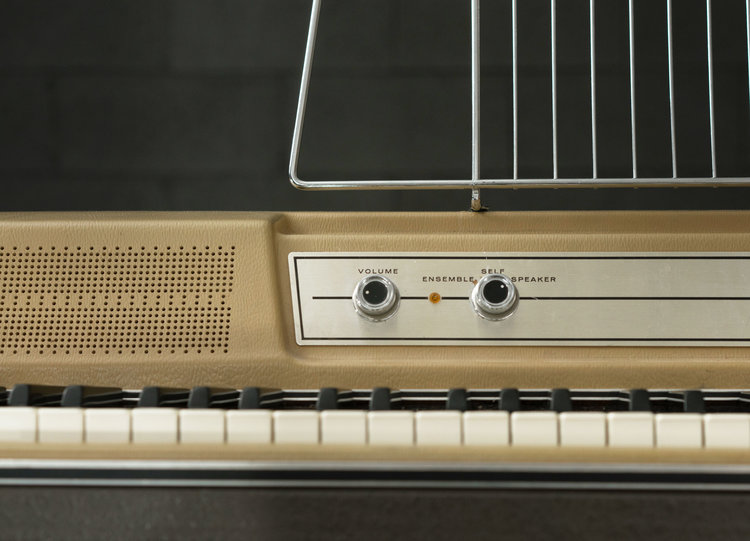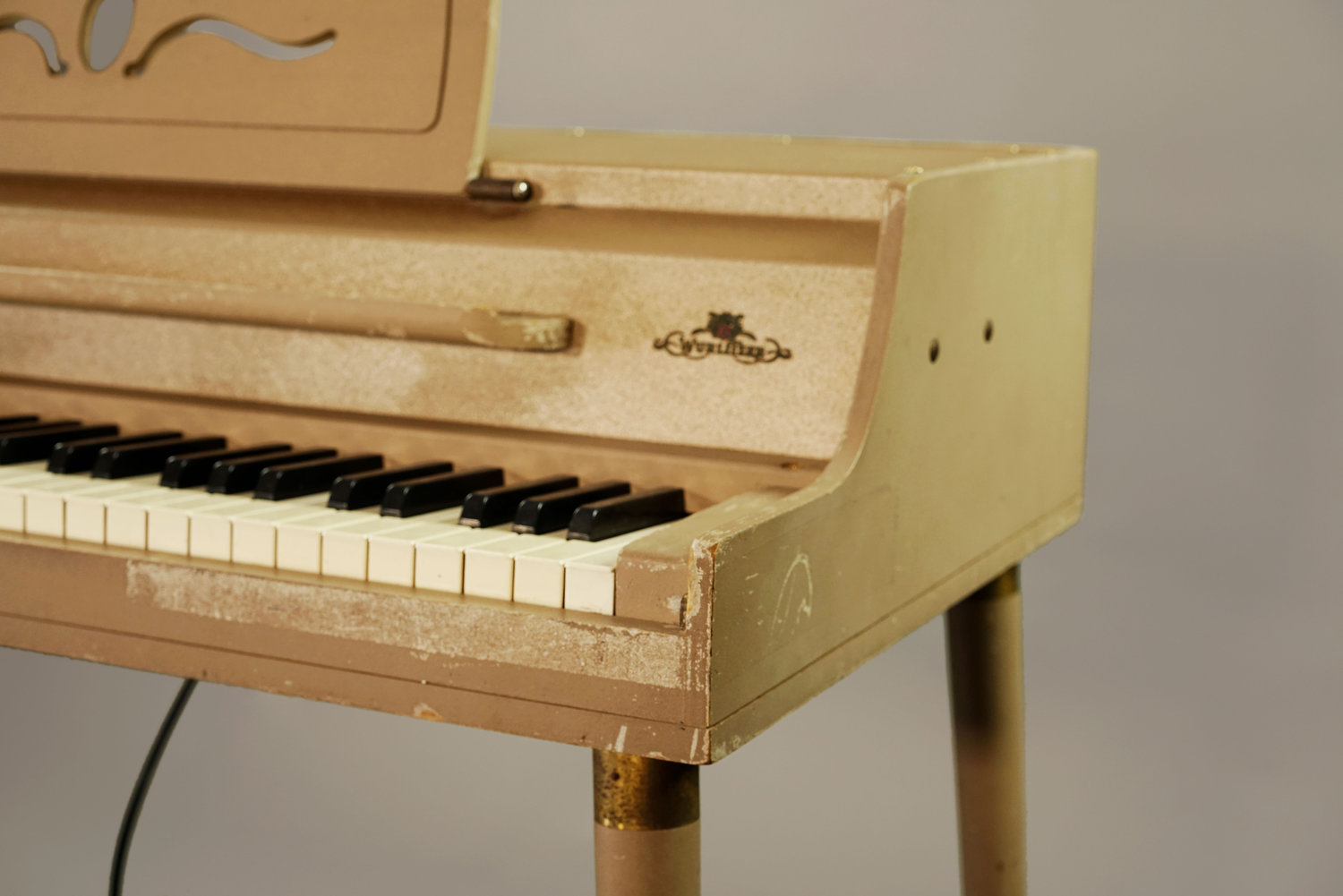In Restoration: Four 206 model Wurlitzers
We are extra-excited about this group of four Wurlitzer 200 student pianos because they are clearly of an early manufacture. Three of them had original music racks with the closely-spaced metal bars, which are incredibly rare. Even aside from that great detail, however, all of the keyboards were in great shape. They had clearly been used only lightly and had been stored in a clean, low-humidity area.
These Wurlitzers have a few odd (but exciting!) features. As we spent more time with them, we keep finding new details, but here’s what we’ve seen so far:
No speakers in the cabinet. Although the Wurlitzer 206a has two 8” speakers in its cabinet, the cabinet of these Wurlitzers is basically empty and serves mostly as a shelf for the headphones. Instead, their speakers are mounted on the amp rail, like a regular Wurlitzer 200. The headphones are an important aspect of a student-model Wurlitzer, so it makes sense to create a space for them in the keyboard design. Still, adding 50+ pounds of weight seems like overkill. Maybe Wurlitzer thought the cabinet base would make the keyboard more child-proof? Maybe they wanted to hide the sustain pedal assembly? Maybe it was intended to make the keyboard seem bigger and more majestic, like an upright piano?
Sticker warning users not to remove the keyboard from the cabinet due to “electric shock hazard.” Now that you’ve made this minimally useful yet extremely heavy cabinet, how do you stop people from dismantling it and just using the functional keyboard part by itself? By threatening them with serious bodily harm, of course!
Okay, okay, the power plug is routed through the cabinet, so removing the keyboard from the base requires a little electronics work. But this sticker just proves that, as long as there were 206-model Wurlitzers, there were people itching to chop them.
Which makes us wonder: did Wurlitzer move the speakers to the cabinet because they thought schoolkids needed the extra bass response two 8” speakers offer? Or were they just trying to discourage people from converting 206s to 200s?
Incredibly clean everything. Most Wurlitzers show evidence of water damage from one thing or another. These keyboards are well over 40 years old: this is just a thing that happens, and there are *ways to mitigate past water damage*. But these 206 Wurlitzers were completely pristine on the inside. The wooden parts look like they were just installed yesterday. It’s very obvious that nobody ever spilled anything inside the keybed or stored them in a place that wasn’t perfectly climate-controlled.
Mechanical parts in abnormally excellent condition. The regulation of these Wurlitzers was pretty good as-is. With just minor adjustments, they became highly responsive, with an excellent feel across the keyboard.
All of the felts and springs are in excellent condition. They’ve been used just enough to become lightly worn-in, but do not show any level of degradation. They are definitely at the sweet spot of original parts: they’ve more or less in new condition, but have a vintage feel that no factory-fresh instrument could ever have.
All evidence points to the fact that these Wurlitzers have never truly been played. Which is kind of sad: an instrument like this should be used, and not kept in a storeroom for eternity. For their next owner, though, this is a chance to buy a Wurlitzer that is more or less brand-new, and give it a new life as a useful tool for music.
Two of these Wurlitzers are currently available: one on the original console, and one that has been converted to a 200 with legs.
Further Reading
Browse all of our articles on restoring vintage gear. Or, click on an image below.






